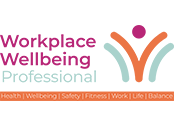With the approach of both Mothering Sunday and the spring equinox – symbol of regeneration and hope – it is a good time to survey the status of mothers in the workplace.
In the period October-December 2024, UK mothers of dependent children accounted for three quarters of the total number of employed women, with the highest rates seen in the 39-45 years age band. The employment rates for single mothers are lower, a consequence of their greater practical and financial challenges; though most of those employed worked full time.
One third of all employed mothers work part-time, a statistic that reflects the age of their youngest dependent child, the total number of children in the family and childcare issues.
Challenges and Cultural Expectations
Independent of financial need, work may provide mothers with a sense of fulfilment outside of parenting, with career progression and leadership mitigating the ceaseless challenges of motherhood. Analysing Paula Rego’s assertion that ‘work is the most important thing in life,’ writer Diana Evans contends that work can provide the essential balance to family and other responsibilities, fostering self-worth and enabling public engagement.
Advancement, however, frequently entails emotional, logistical and practical challenges. Cultural and family expectations about a woman’s responsibilities (and a man’s perceived worth) may impact career decisions, possibly exacerbated if the mother herself experiences guilt about spending time away from young dependent children.
It is little surprise that there are no recorded figures on the percentage of mothers who occupy senior leadership or C-suite roles – a gap that highlights the neglect of the status or needs of working mothers. It is known, however, that in 2024, women occupied 32% of all leadership roles in FTSE 100 companies but only 9% of executive roles. Gender parity remains voluntary in corporate governance, despite research showing that women-led companies excel in customer experience, social responsibility and profitability.
Under-Representation At The Top End
In the workplace, mothers with dependent children now outnumber women without dependents. This fact alone invalidates the criticism ‘you just want to have it all’, a comment often lobbed at working mothers. Many mothers work precisely because they want to have a family. They accept the ‘double shift’ – a day in the office sandwiched between early morning and late afternoon/evening responsibilities with children – to achieve this goal.
In recent years, there has been strong growth in full-time female employment, particularly post-COVID. Since 2020, in couple families, where both partners are employed, it is more common now for both partners to be in full-time employment.
Whilst seats at the board continue to be limited, leadership comes in many guises. The opportunity to inspire and empower others, listen actively and communicate clearly are skills that come naturally to many women. When paired with an innovative vision or a disruptive strategy, these qualities are of immense social and economic benefit in the workplace.
Health & Social Work and Education, the two sectors dominated by women (77% and 70% respectively), both require leadership influence; what may be termed the ‘soft’ skills of leadership. More importantly, these sectors offer flexible working arrangements which – despite the considerable financial penalties – allow mothers to work term-time only.
At the top end, however, areas where financial decisions and strategic vision are integral, women continue to be notably under-represented: whilst 63% of all teachers in the UK’s secondary school are women, women headteachers only account for 38%.
The ‘gender commuting gap’, a term describing the difference in acceptable commuting time between men and mothers of dependent children, explains why so many mothers work part-time. A second reason is the high price of child care – which even leads some women to leave the workforce. Thirdly, women’s relative lack of success negotiating for an increase in salary within their firm drives many mothers into part-time work or lower paying ‘family friendly’ occupations.
Lack of Support
Part-time work tends to be lower paid than full-time work, and – inequitably – does not remunerate employees according to experience. Maternity leave and career breaks in order to care for young children all too often disadvantage mothers seeking to exercise leadership roles.
Many women become mothers after joining the workforce and describe facing a process of considerable adjustment. The Right Honourable Bridget Phillipson, Secretary of State for Education and Minister for Women & Equalities first became an MP in her 20s in 2010.
The daughter of a single mother, she states that she was inspired by the strength of the feminist voices in her local Labour Party, as well as by the extreme socioeconomic deprivation of the Northeast of England where she was raised. Whilst serving as a backbencher, Phillipson went on to have two children but admits that she could not have mothered them if she had had a ministerial role at the time.
Stella Creasy, a Labour MP of the same political generation as Phillipson, has also had two children whilst in office. She made history as the first woman to bring a baby into Westminster Hall, and when officially reprimanded by the House Authorities, commented that the Chamber was one of the few places that as a new mother, going into work for a ‘keep-in-touch day’ was unsupported. The 2013 portrayal of a nursery for 0-5 year olds as a ‘drain on the public purse’ caused her no surprise.
Together with women MPs from all political parties, Creasy has used her leadership skills to address mothers under-representation in the political process and across society; fighting to make misogyny a hate crime, to remove charges on Irish women coming to England to have an abortion and to improve maternity rights. The visibility of campaigning often brings unwelcome attention to women MPs and their families, and sometimes danger.
Creasy, herself, has received rape threats and also been maliciously reported to social services as an unfit mother. The 2016 murder by a right-wing extremist of the Labour MP, Jo Cox, a mother of a 5 and a 3 year old – whilst a rare event – highlights the risks women may face when speaking up in the public square, and the courage of those young mothers who continue to do so fearlessly.
Does Entrepreneurship Offer Mothers Greater Freedom than Employment?
Mothers looking to circumvent the ‘motherhood penalty’ may consider entrepreneurship an attractive option as it ostensibly allows them to choose their hours. In 2019, a Treasury report on female start-ups concluded “up to £250 billion of new value could be added to the UK economy if women started and scaled new businesses at the same rate as UK men”.
One fifth of all new companies were all-female led in 2022; in 2023, close to half of entrepreneurs in the UK were women (46%) , a higher proportion than in France and Germany.
The UK boasts many successful mother entrepreneurs who have become household names, including Cat Gazzoli who after working in a UK non-profit organisation, set up Piccolo, a premium baby, infant and toddler food brand.
Inspired by her belief in healthy, ethical sourcing, cultural heritage, and the needs of her own child, she has grown her business into one of the UK’s fastest growing food companies with representations at major supermarkets, including Asda, Tesco, and Waitrose.
Pippa Goulden, the mother of two boys, set up The PR Set, a 1-2-1 company that she runs singlehandedly. Starting every day with either a dog walk or a gym session, she emphasises the importance of having fun outside of work with family and friends.
She, like Gazzoli, was able to draw on her own previous experience – and contacts – to help her establish and grow her business. Other highly successful businesses created by mothers over the past 50 years include The Body Shop, Net-a Porter, Mumsnet and Charlotte Tilbury.
You would be unwise to believe that this route is less misogynistic or easier than being a payrolled employee. Despite the Invest in Women Taskforce, the Financial Times on March 19, 2025 stated that female-led businesses are ‘starved’ of investment.
Not all women are suited to entrepreneurship and many of us are not reaching for the stars. We simply want to find fulfillment at work and earn an equitable wage. So how do we do this? Here are my top tips for both the self-employed and employed mothers:
- Have a goal and plan
In order to advance in your career, you need to have a clear goal. Ask yourself what success looks like for you and what your time frame is. Use the SMART goals – or my version for working mothers: BE SMART. Ask yourself whether you are aiming for the C-Suite in the next couple of years or would you like a role with slightly less responsibility at present?
If you are opting for starting your own business, listen to the podcasts hosted by Julia Gillard, former Prime Minister of Australia and Chair of the Global Institute for Women’s Leadership at King’s College, London.
The McKinsey report, ‘Women in the Workplace: 2024’ may offer helpful insights. Karren Brady, the youngest ever female director and now Baroness Brady, uses her own leadership skills to help women in business. Read her advice column in The Sun, Women & Home and Cosmopolitan.
Be aware that your obligations may change as your family grows. Plan for the next three years.
- Be aware of your company’s culture and its policies on motherhood, menstrual health and menopause
Is there a systematic gender bias in your workplace that might hamper preferment? Does your company have a ‘leaky pipeline’ into its enior executive roles? Does the company offer flexible working arrangements? Are there many women in senior leadership positions in your organisation? Are they mothers? If the answer is ‘yes’, go and talk to them!
How are women employees supported on their return from maternity leave?
- What support is there for women going through the menopause?
If you go into early menopause, what support is there in place? Is your company open, in general, to becoming more mother and women friendly? If so, direct them to the work of Dr. Michelle Tessaro, Visiting Professor at Cranfield University School of Management. Or check-out the nine month course at King’s College London on evidence-based strategies to breakdown systematic barriers in the workplace. Is the company open to talking to their staff in order to produce menopause-friendly policies?
- Plan, plan, plan
The well known saying, ‘If you want something done, ask a busy person’ highlights the value of good organisation. Many working mothers have planners and calendars that would not be out of place in a war cabinet. Make sure that all ‘stake-holders’ in your domestic arrangements and work commitments access it on a daily basis.
- Find a mentor
Having a work mentor – preferably female – may help you understand the increasing pressures you might face as you advance. You may also like to follow Karren Brady, the youngest ever Director of a UK football club.
- Secretary/PA
Are you senior enough to have a PA or to share one with another colleague? If the answer is yes, train them to help safeguard your time by fielding some of your incoming telephone calls. Digital/ virtual assistants can do the same.
- Block out time
If you feel under pressure to deliver on a project or specific task, block out time in your diary. Find a time when you will answer emails and calls. Being disciplined will make you more productive.
- Flexibility
If you are employed, you may wish to have a hybrid schedule – working some days from home and some in the office. If so, discuss this with your employer. If you have young children at home, you may find it easier to be in the office. Be careful if you work from home to ensure that you are not excluded from significant meetings.
- Be clear about the support that you require
Depending on the heights of your ambition, you may need additional resources. Talking to your partner as early as possible in your career is always the most helpful strategy and will definitely avoid conflict later on. What is your joint vision of parenthood? Do you both want to work full-time? Does your partner want to be a house husband/wife? Is it possible for both of you to work a four day week, and then find someone to look after your child(ren) the other three days?
If you are a single mother or part of a couple where both of you work, you will need to think about the help you need. Have you got a reliable family member who can help look after your child(ren)? Or perhaps you need a nanny – full-time or part-time, live-in or live-out? Does the nanny need to drive? If this seems a prohibitively expensive option, can you do a nanny share? Can your preschool children go to a childminder? Is there a creche at work? How many free nursery hours are you entitled to? Are there breakfast clubs/ after-school clubs that might help you juggle?
- Network with other busy women.
- Don’t ignore your friends
- Recognise stress or burn-out
Look after your mental and physical health. Soldiering on is not an option.
If your job is mother-hostile, find another and then hand in your notice, or set up by yourself. - Don’t be afraid to ask for help
- Have a back-up, where possible
- Is job-sharing an option?
- Negotiate the expectations about travelling before accepting a job.
- Use Mumsnet
It’s an invaluable source of advice and support.
- Do I want a child?
If you have not decided whether to have a baby, you are not alone. LinkedIn is full of discussions of women entrepreneurs agonising whether it is possible to have a child and a business.
And finally, please remember that although this feature has focused on mothers of dependent children, the work-place is full of mothers of older children who often require significant emotional and logistical support. Their demands are often not acknowledged in the workplace. Women may additionally be ‘mothering’ their own elderly parents, providing administrative support and accompanying them to medical appointments, whether routine or emergency.
We are a long way from the origins of Mothering Sunday in the UK where the most onerous task seemed to be the baking of the traditional Simnel cake! So to all mothers, working at home (whether paid or not) or in an office, remind yourselves that the skills of motherhood and those of leadership are the same. Celebrate your achievements, show some self-compassion when things do not always turn out right and believe in yourself.
Happy Mother’s Day.

Dr. Nikki Scheiner empowers women to thrive. With 15 years of experience coaching professionals, she is dedicated to shaping a future where workplaces across the UK are certified as spaces of equality and well-being.
Dr. Scheiner is committed to advocating for women in leadership and providing guidance to help them progress confidently to Director-level positions. She believes in the power of leadership and mentorship, aiming to be a trusted partner for women seeking to grow, succeed and lead effectively


